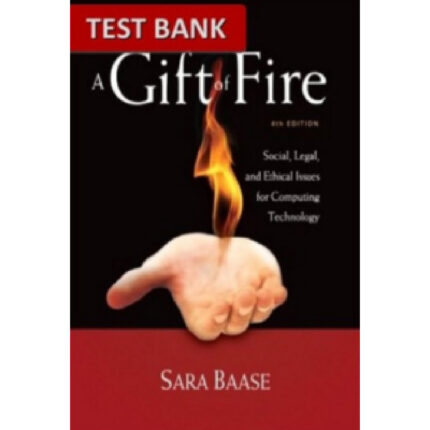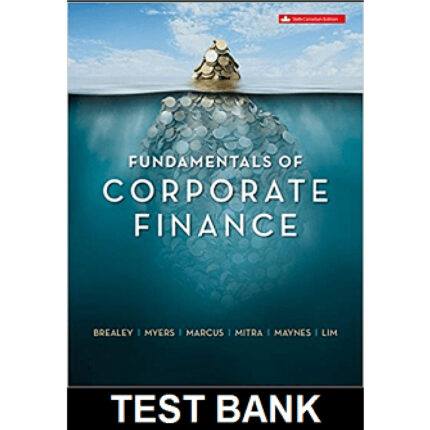International Corporate Finance 1st Edition Ashok Robin – Test Bank
Chapter 11
Optimizing and Financing Working Capital
Multiple Choice Questions
1. The money that a firm uses on a day-to-day basis to carry out transactions with its customers and suppliers is referred to as:
A. short-term financing.
B. accounts receivable and payable.
C. cash and equivalents.
D. working capital.
2. The equation for calculating working capital is:
A. quick assets – current liabilities.
B. current assets – current liabilities.
C. assets – liabilities.
D. current assets – liabilities.
3. The balance sheet accounts that day-to-day operations involve include:
A. cash, accounts receivable, liabilities and equity.
B. cash, accounts receivable, accounts payable and short-term debt.
C. assets, short-term debt and long-term debt.
D. assets, liabilities and equity.
4. Why might an MNC’s working capital situation be more complex than a domestic firm’s working capital situation?
A. An MNC’s current assets and current liabilities are consolidated across its subsidiaries, which means that there are a variety of risks involved in those assets and liabilities.
B. An MNC is usually much larger than domestic firms, so MNCs have more assets and more liabilities and more need for working capital.
C. An MNC has more complex financing arrangements than domestic firms.
D. MNCs are subject to more regulation than domestic firms.
5. In the context of working capital management in MNCs, credit policy involves consideration of:
A. optimizing cash balances across countries where the MNC operates.
B. pricing and credit terms.
C. currency risk and local market conditions.
D. credit rating of customers and competition.
6. Cash management for MNCs includes considerations of:
A. currency, interest rate, and transaction risk.
B. interest rates, inflation rates, and default rates.
C. risk, agency cost, and real options.
D. asset and liability levels.
7. The most liquid of assets and a necessity for working capital transactions is:
A. marketable securities.
B. accounts receivable.
C. current assets.
D. cash.
8. In traditional working capital analysis, holding a large cash balance is:
A. a positive strategy because it reduces the transaction costs involved in liquidating assets to raise cash.
B. a positive strategy because it relieves the firm from having to obtain short-term financing.
C. a negative strategy because it means that the cash is not earning a return.
D. a negative strategy because it imposes additional currency risk on the firm.
9. Explicit transaction costs, such as __________________________ have been reduced because of increased efficiencies in banking.
A. interest and spreads
B. account charges and spreads
C. interest and commissions on transfers of funds
D. account charges and commissions on transfers of funds
10. What are implicit transaction costs that MNCs incur in dealing with their cash balances?
A. Implicit transaction costs are costs of dealing with a firm’s cash balances that are not disclosed to the firm until after the transaction is completed.
B. Implicit transaction costs incurred in dealing with an MNC’s cash balance involve costs associated with making internal decisions about the firm’s cash balance.
C. Implicit transaction costs are costs of arranging the firm’s cash balances that the firm will not have to pay until a later time.
D. Implicit transaction costs are costs that are charged to a firm in connection with managing its cash balances that will be deducted from the firm’s cash balance rather than being billed to the firm.













Reviews
There are no reviews yet.